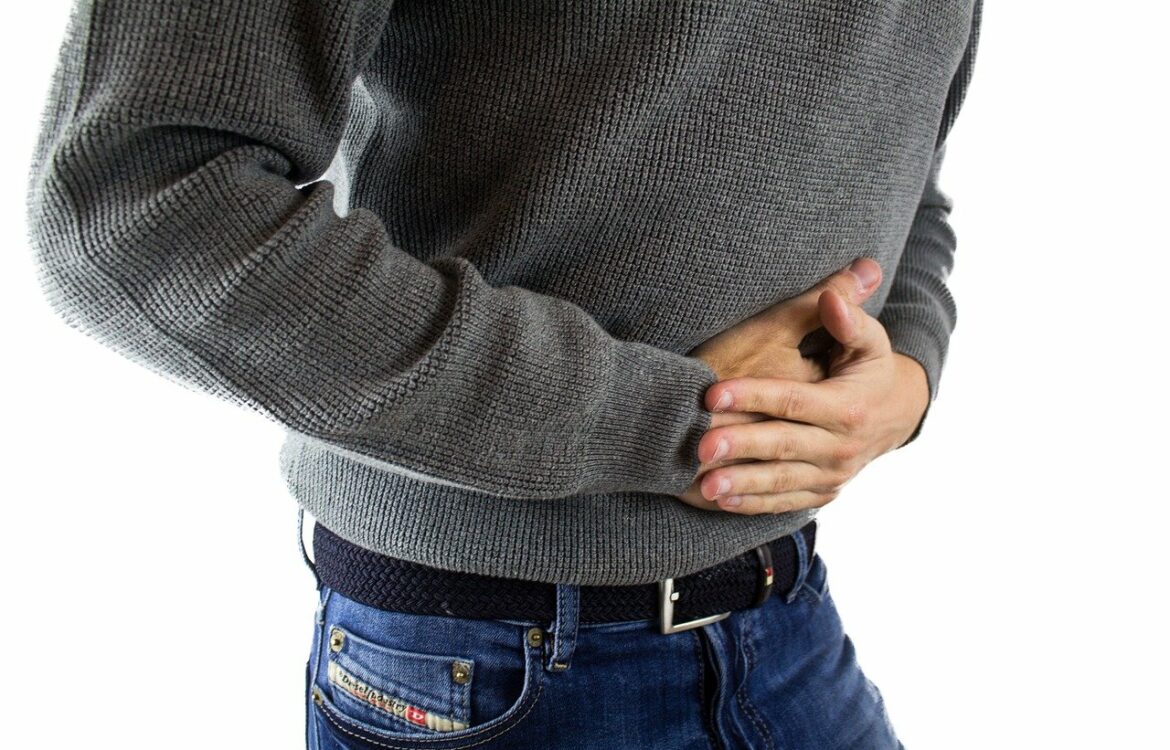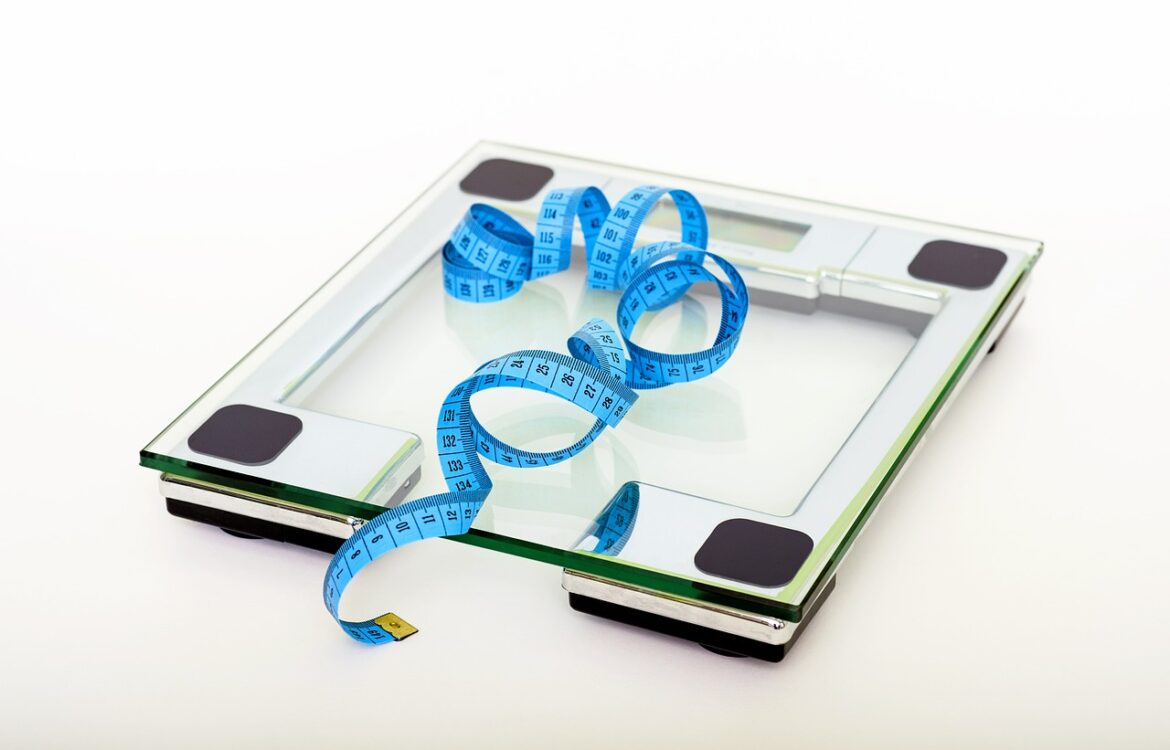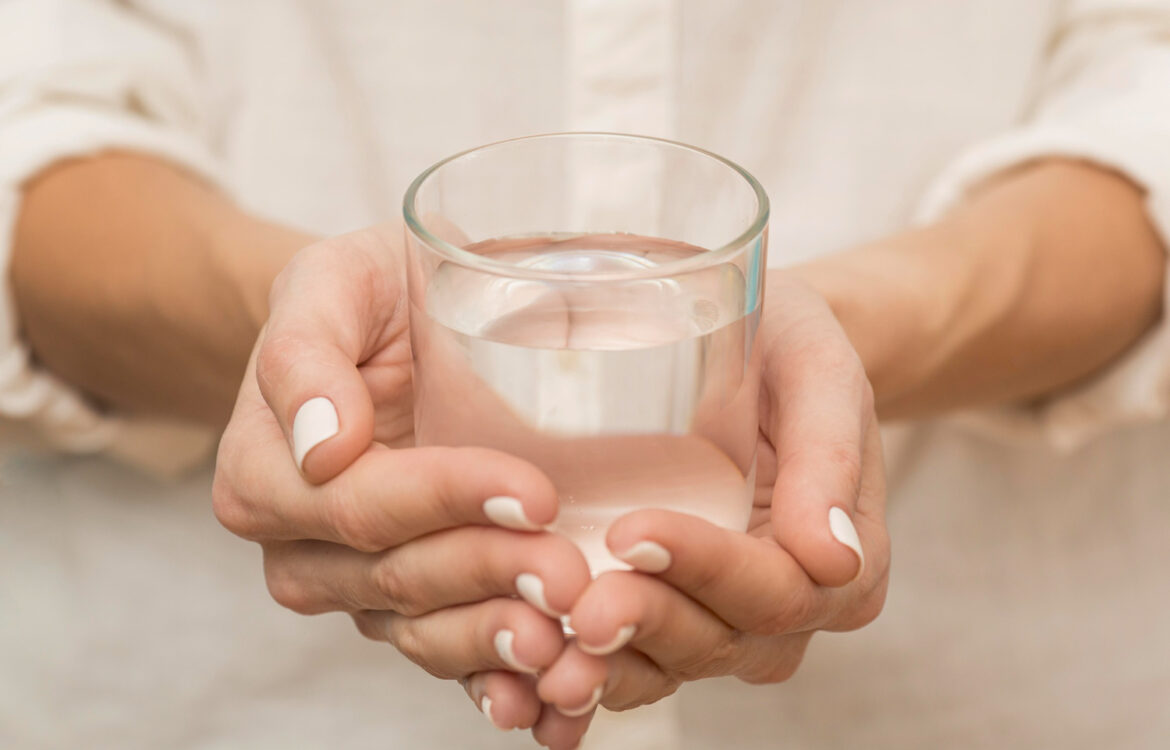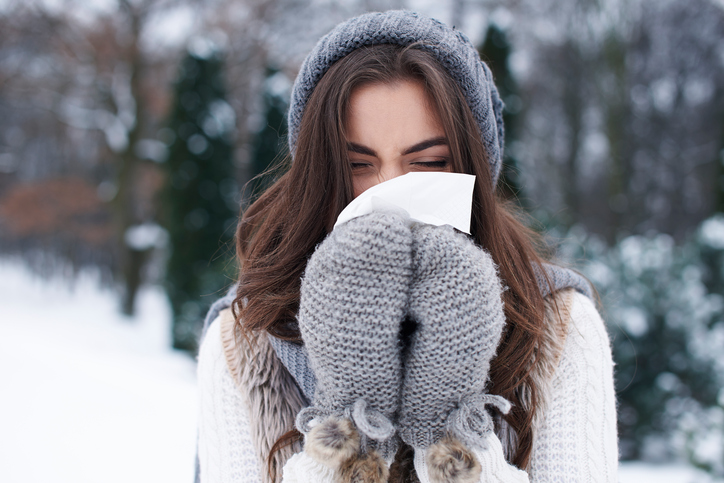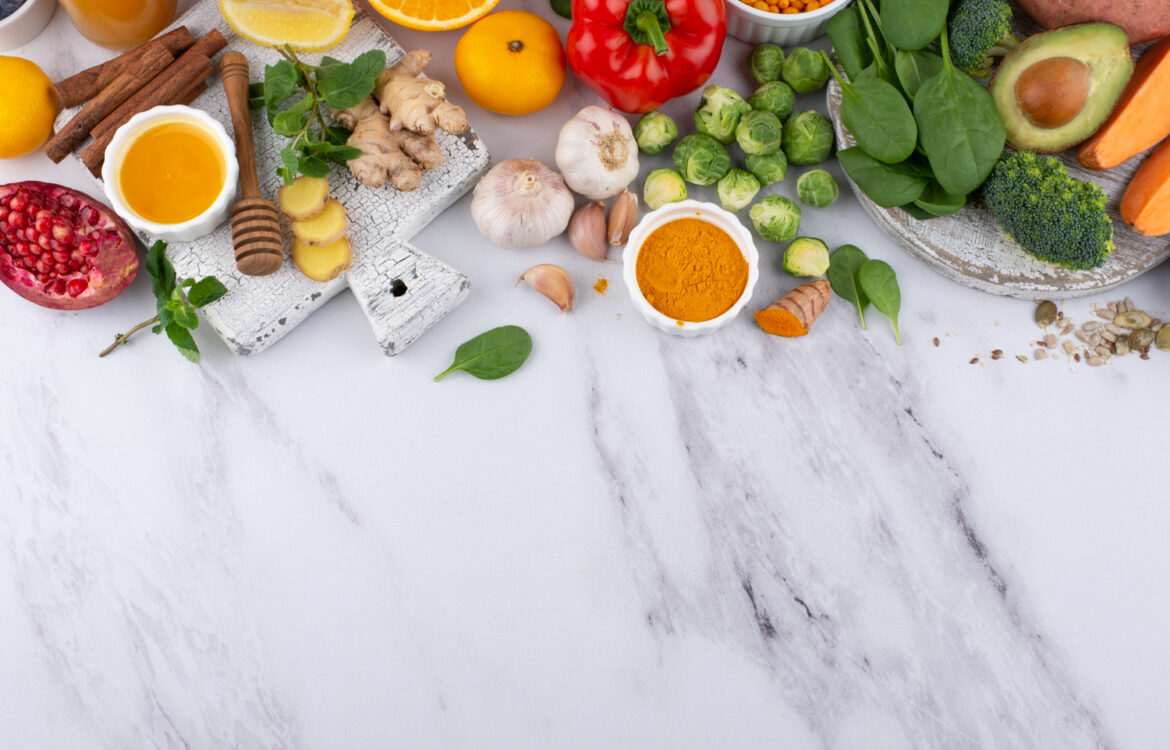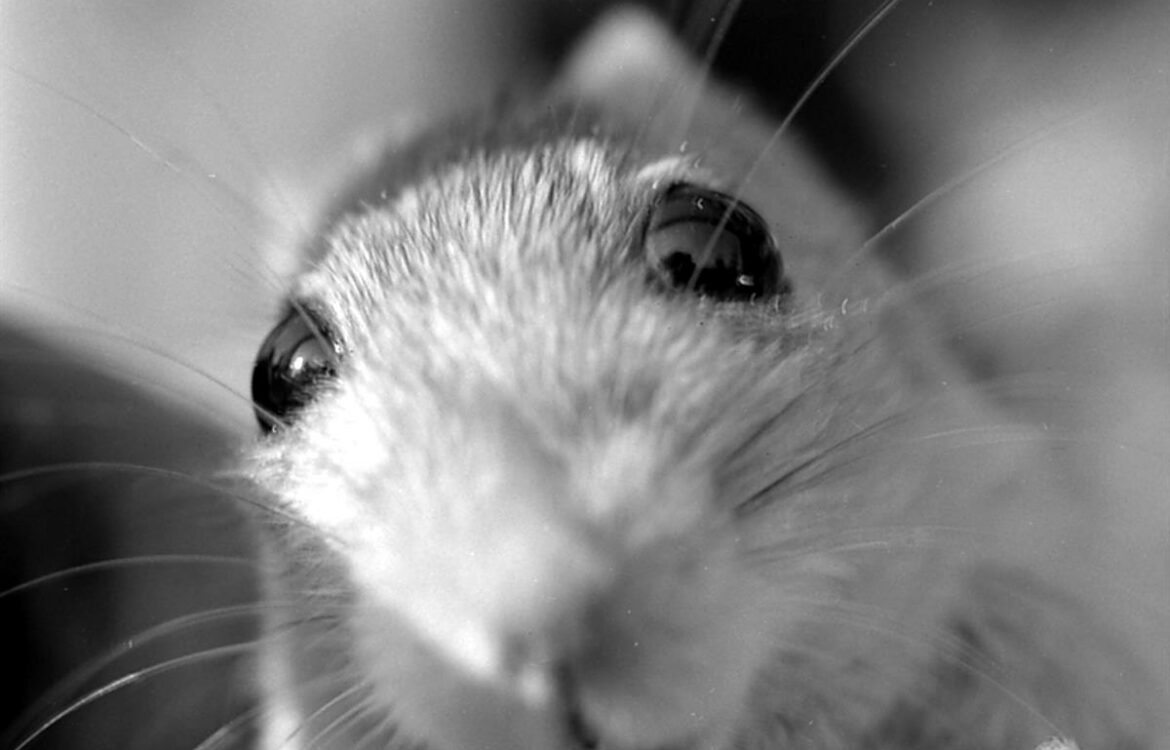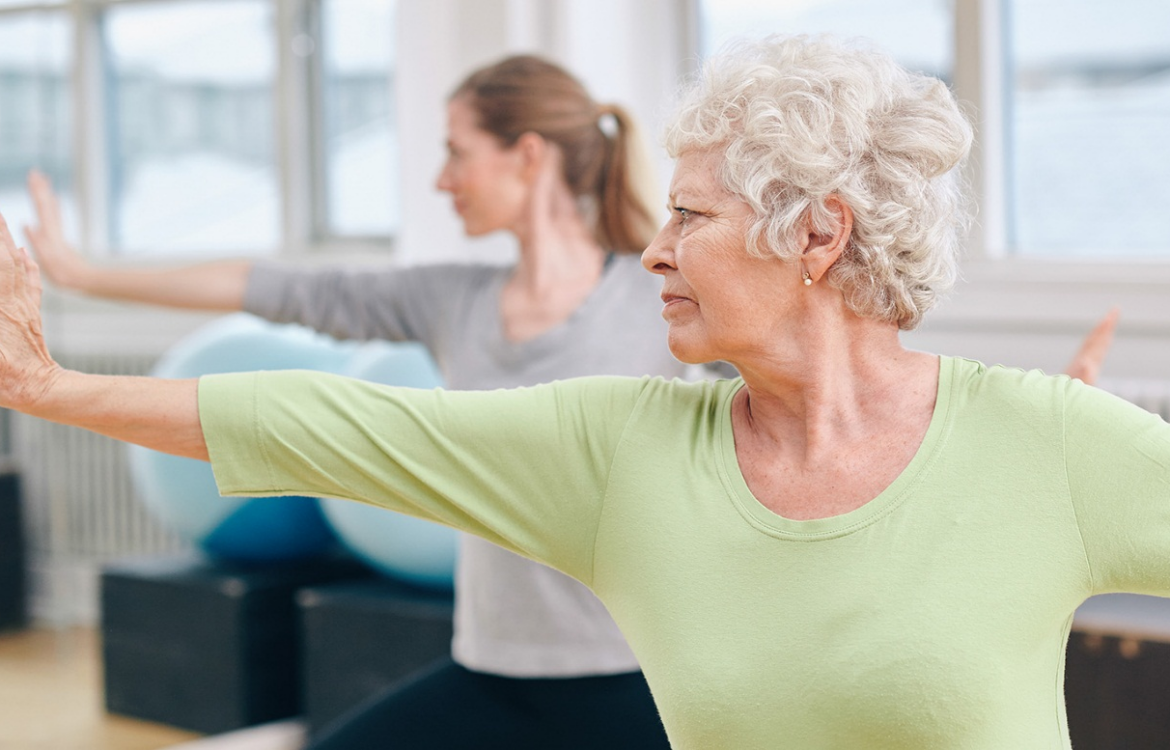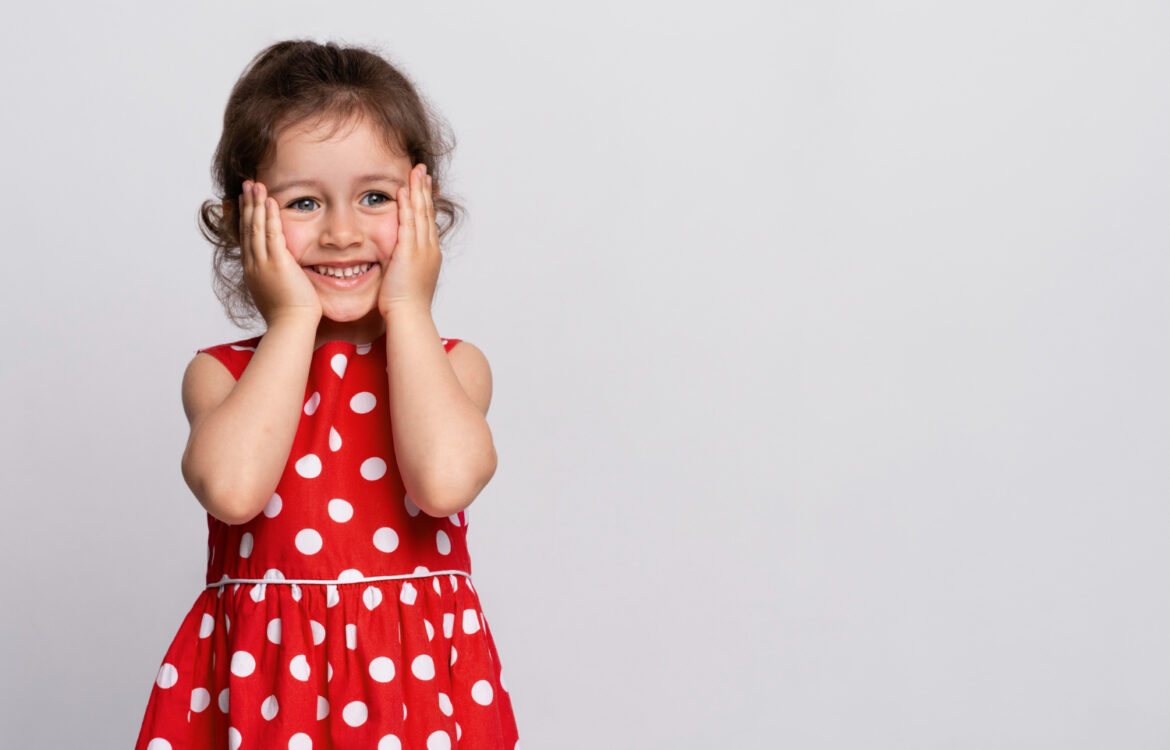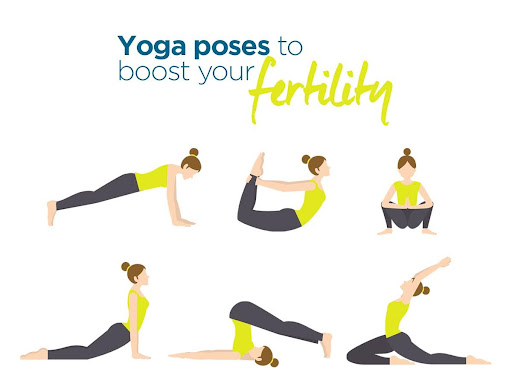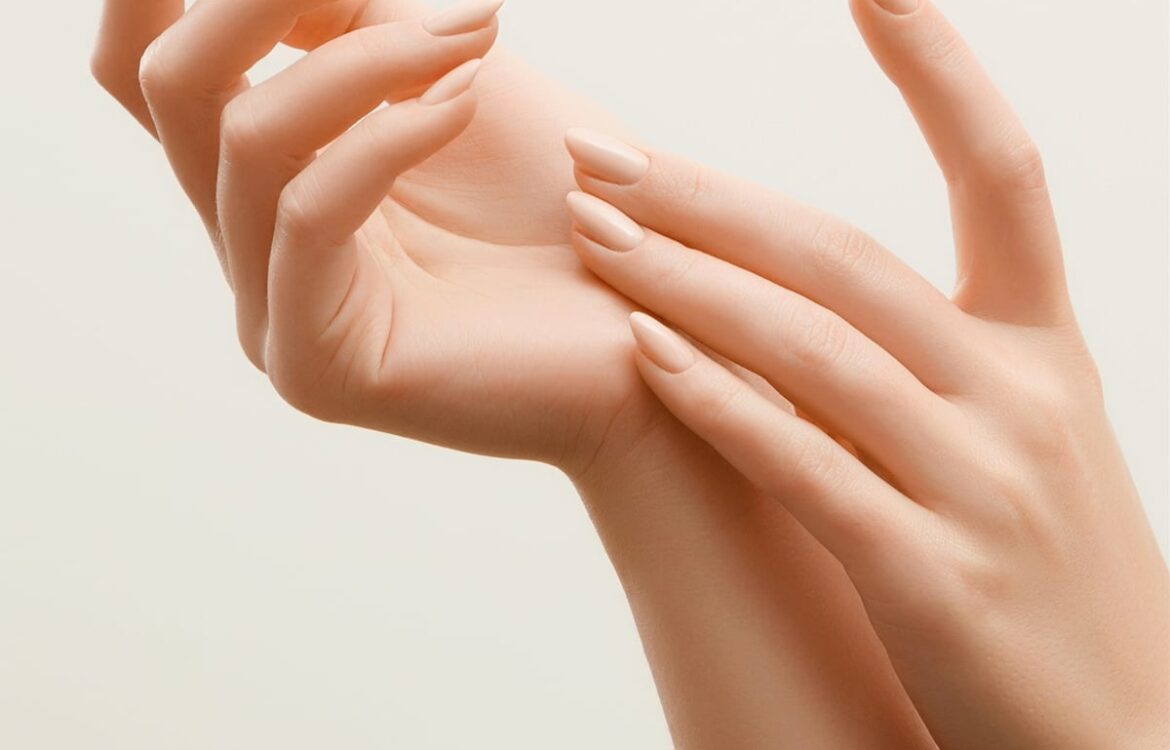Author Archives: Dr. Vaidya Karanvir Singh
How To Deal with Gas, Acidity at Home?
- December 22, 2021
- Posted by Dr. Vaidya Karanvir Singh
- 0 Comment(s)
Acidity is a very common problem related to the stomach, which increases in the summer season. Many times, such problems can occur due to food-related mistakes such as eating late, eating very spicy or heavy food and falling asleep immediately after eating. (Hyper Acidity Cause) At the same time, many people start having acidity problems again and again and in every season. This problem of theirs is very serious which starts affecting their overall health as well. This condition is called hyper acidity. This situation can be very harmful. Therefore, it should be treated at the right time. So, at the same time, some home remedies can be adopted to get relief from it at home level as well.
These natural things provide relief from Hyper Acidity
Triphala
Triphala is found in every household in India. It is a mixture of 3 fruits Haritaki, Bahera and Amla. It is considered effective for every stomach problem. Therefore, you can consume Triphala in hyperacidity. You can take this every morning with water.
Milk
It proves to be a good antacid food. Because, drinking milk reduces the problem of gas and acidity. You can drink cold milk to get relief from hyper acidity. Apart from this, add raisins or dry grapes to the milk and boil it. Keep the flame low while boiling this milk. Because, raisins can cause milk to burst. Let this milk cool down after boiling for 5 minutes. Then, drink it.
Read Also: Top 9 Home Remedies for getting relief from Acidity
Mulethi
Mulethi, which gives relief from throat problems, also reduces the problem of hyper acidity. Boiling a root of liquorice with water or drinking a decoction made from liquorice powder can reduce your acidity problem. Along with this, this recipe also reduces stomach pain due to acidity.
Neem tree
You can try Neem, which is rich in its anti-bacterial properties, as a home remedy for hyperacidity. Neem bark powder can be used in stomach problems. For this, mix a teaspoon of neem powder in a glass of water. Keep it covered overnight. Strain it in the morning and drink .
There is a complaint of burning in the throat and stomach after eating excessively fried, spicy and spicy food. But many people get this complaint often which is called acidity. Due to acidity, there are problems like mild pain in the stomach, burning sensation and burning in the throat. The gastric glands of our stomach secrete acid to digest food. When this secretion becomes more then we complain of acidity. This isn’t a big problem. But if it is not treated on time, then the complaint of pain can increase.
Read Also: Remedies for Acidity
Consume lemon water – The alkaline property of lemon neutralizes the excess acid secreted in our stomach and quickly removes the problem of indigestion, which reduces irritation of the stomach and throat. For this, drink a glass of lukewarm water mixed with a teaspoon of lemon juice.
Basil – Basil leaves relieve us from the burning sensation caused by acidity and relax the stomach. For instant relief from irritation, you should chew 4 to 5 basil leaves and eat it. If you want, boil basil leaves in some water and then drink that water lukewarm.
Fennel – Often people like to consume fennel after eating. The reason behind this is that fennel is helpful in digestion. It also benefits in burning of stomach and throat. It cools the stomach and relieves burning sensation.
Jaggery – This is considered a very beneficial home remedy. It accelerates the process of digestion and protects us from acidity. If you are going to take heavy meal, then eat some jaggery before that. Even if there is a burning sensation in the throat and stomach due to acidity, eat a piece of jaggery, it will end the burning sensation.
Aloe Vera Juice – Aloe Vera has many benefits for our health. Due to its anti-inflammatory properties, it also gives us relief in irritation caused by acidity. To make juice, separate the pulp of aloe Vera from the leaves. Then mix it in water and prepare its juice. Consume this juice 2 to 3 times a day.
Effective Ways to Achieve Weight Loss While Staying at Home
- December 22, 2021
- Posted by Dr. Vaidya Karanvir Singh
- 0 Comment(s)
Obesity has become a common problem due to irregular eating and other reasons in the busy lifestyle. Earlier, where people were troubled by increasing weight with increasing age, now children and youth are also becoming victims of obesity from an early age. What are people not doing to put a brake on their increasing weight? Do you work out in the gym for hours, take different weight loss packages or keep on starving yourself due to dieting? We are telling you about some such easy home remedies, which will not only control the increasing weight by making it a part of your daily routine, but will also not lose your pocket.
Obesity gives rise to many diseases such as diabetes, high blood pressure, heart diseases, stroke, insomnia, kidney disease, fatty liver, arthritis or joint disease etc. Therefore, it becomes very important to control obesity in time. People do a lot of workouts in the gym to get rid of obesity, they also control diet, but despite all this they are not able to control their obesity. But today we tell you such an effective remedy, using which your obesity will be reduced in a few days. By using Triphala, ginger and black pepper, you can control your obesity in a few days. According to Ayurveda, these spices can help you lose extra weight by improving your digestion
Honey with warm water
Drinking honey with warm water every morning on an empty stomach helps in weight loss. Due to this the sugar level in the body remains fine and the skin also glows.
Lemonade
Consuming lemon water every morning on an empty stomach is also an effective remedy for weight loss. In winter, those who are allergic to cold or have sinus problems, they can drink lukewarm water with lemon in it.
Tomato Yogurt Shake
Blend one cup of tomato juice with one cup of curd (fat free), half a teaspoon of lemon juice, finely chopped ginger, black pepper and salt as per taste. By drinking a glass of this shake daily, your weight will be controlled rapidly.
Read Also: DIET PLAN FOR WEIGHT LOSS
Drink plenty of water
Drinking eight to nine glasses of water a day also helps in reducing weight. It has been told in some research studies that with eight to nine glasses of water a day, you can burn 200 to 250 calories.
Let us know how these three spices can prove to be helpful in reducing your weight.
Sweet potato rich in fiber controls weight.
If you want to control weight in winter, then consume sweet potato,
Use Triphala:
Triphala is the best medicine to reduce weight. Triphala has the ability to eliminate toxins from the body, which helps in improving your digestion. You can take Triphala powder with warm water two hours before dinner and half an hour after breakfast.
Pepper powder:
Black pepper is very effective in reducing your weight. The compound piperine present in black pepper may aid in weight loss as it hinders the process of adipogenesis (the formation of fat cells in the body). You can drink a glass of lemon, honey and water mixed with a pinch of black pepper. Black pepper has the ability to reduce weight in a miraculous way.
Use Ginger:
Ginger strengthens your immune system. It has been revealed in many studies that 6-gingerol, present in ginger, helps in reducing inflammation in the body and also helps in burning fat. Ginger has antiobesity properties that prevent the formation of fat in the body. By consuming ginger, you will lose weight and you will also be healthy.
Stopping gaining weight and reducing the increased weight are both closely related to each other. If you understand these two correctly, then it becomes very easy to lose weight. Many times people sweat in the gym for months but are not successful in losing weight. Do you know what is the most searched weight loss word on the Internet? We are telling, how to control weight? That is, when the weight is increasing, then people are getting to know. If this is happening to you too, then before becoming a victim of obesity, adopt these Ayurvedic Weight Loss Tips.
Read Also: Weight Loss In Winter
The best way to control weight is to correct diet. Diet alone contributes to 70 percent weight control. You don’t have to do anything special for this. All you have to do is take the right food and diet at the right time in the day. According to Ayurveda, the habit of eating 3 times a day is helpful in controlling weight. Have to eat 3 times a day but eat only healthy food made at home.
Right time for dinner
The main reason for weight gain is the habit of eating late at night. If you also eat late at night, then leave this habit today. Because losing weight will be very difficult. According to Ayurveda, food should be eaten by 7 o’clock in the night. Apart from this, dinner should be light and digestible.
Include this thing in diet
We are very less cautious about food. Many times we keep on taking the same type of diet continuously. Because of this, obesity also increases. Every type of food should be included in the daily diet for all the nutrients. Foods like sweet, sour, vegetable, fruit, milk, curd should be included in your daily diet.
Stay away from unhealthy food
If you really want to lose weight, then you should not eat outside food. There is a lot of oil, spices and salt in outside food which is harmful for health. It neither gives nutrition nor allows weight loss.
Pay attention to drinking water
The role of water in reducing weight is the biggest. Drinking water at the right time and in the right amount leads to rapid weight loss. Apart from this, drinking lukewarm water after waking up in the morning helps in rapid weight loss.
There are many benefits of drinking lukewarm water . It helps you to lose weight by removing toxins from the body.
Sleep time
Sleeping time at night also greatly affects your weight. If you do not sleep at night, then your weight starts increasing very fast.
Apart from this, if you do not get 7-8 hours of sleep at night, then the metabolic rate is bad and you are a victim of obesity. Now if you want to lose weight, then the best tips for weight loss is to get enough sleep at night.
Benefits Of Drinking Lukewarm Water in Winters
- December 22, 2021
- Posted by Dr. Vaidya Karanvir Singh
- 0 Comment(s)
Many health experts recommend starting your day with warm or lukewarm water every day. The benefits of drinking hot water are many, but the need for this increases the most when winter starts. The health benefits of hot water increase even more during the cold season. Hot water should be drunk daily in winter, blood circulation remains better
Hot water is a panacea to overcome many stomach problems. Hot water should be consumed daily in winter. Here are the health benefits of including hot water in your routine.
Why Should You Drink Hot Water?
Many health experts recommend starting your day with warm or lukewarm water every day. The benefits of drinking hot water are many, but the need for this increases the most when winter starts. The health benefits of hot water increase even more in the cold season. In winter, the outside environment is cold, in order to create a balance between our body and the environment, we need to keep our body warm. The temperature of the water should be the same as the normal temperature of your body, therefore, lukewarm or hot water is what we usually drink to detox the body or to relieve a sore throat.
You are suffering from cough in winter, so these effective home remedies are surefire remedies, you will get relief soon!
Many people want to know about the health benefits of drinking warm water. It is advisable to drink lukewarm or warm water in winters, but are you aware of its benefits? Here are some health benefits of drinking hot water in some winters…
Lukewarm Water Benefits: In winter, lukewarm water is no less than a panacea for digestion. Although drinking lukewarm water in every season is beneficial for health, but consuming hot water in winter can overcome many problems. The benefits of getting lukewarm are many.
Skin Care Routine: Drinking lukewarm water daily will give glowing skin, spots will be removed, know the right way to drink hot water
Lukewarm Water For Skin: Have you ever noticed that glowing skin can be found by drinking lukewarm water. Whatever we eat and drink has a direct effect on our skin, in such a situation, if our stomach is not happy, then its negative effect is also seen on the skin. Sometimes in the form of acne and sometimes in the form of stains.
Great Drinks to Start the Day
It is beneficial to start your blissful morning with a glass of warm water. It improves the metabolic rate of your body which helps indigestion. Hot water is more beneficial than cold water. It works as a wonderful laxative which eases constipation and other related complaints like piles etc which get aggravated in winters.
To get rid of cold and flu, mix turmeric and ginger in green tea, immunity will be strong!
Hot Water Health Benefits: Drinking hot water can cure many stomach problems along with constipation.
2. Improves blood circulation
Hot water stimulates the blood vessels thereby improving circulation. Blood circulation can get affected in winters as the veins get constricted due to cold. In such a situation, hot water can be very beneficial in improving blood flow.
3. Helpful in relieving body pain
Hot water helps in reducing muscle cramps, headache, menstrual cramps as it helps in providing heat to the muscles in our body. Relaxes them and helps reduce cramps.
4. Effective in Weight Loss
Several researches have supported the idea that drinking hot water boosts your metabolism, which helps break down fat. Drinking hot water can promote weight loss in a healthy way. In such a situation, people trying to lose weight should start their day by drinking warm water every day.
Indigestion, constipation and acidity, these ayurvedic drinks are the perfect remedy for every stomach problem!
5. Keeps away winter cold and cold
Hot water reduces the intensity of cold-cough, cold and other infections because hot water has the ability to fight bacteria. Hot water steam can be a wonderful remedy for all types of colds and allergies and sinus complaints.
Why Allergies Are Common in Winters?
- December 22, 2021
- Posted by Dr. Vaidya Karanvir Singh
- 0 Comment(s)
- Allergies are common in winters because of the colder and harsher weather.
- If you are spending more time indoors during winters, it increases risk of exposure to indoor allergens.
- Which then may bring about symptoms of winter allergies.
- Outdoor winter allergies aren’t such a cause for concern but indoor allergies can increase risk of getting ill.
- In winters, you might notice allergy symptoms such as sneezing, wheezing, and itchy, watery eyes.
- House dust mites, animal dander and cockroach droppings are most common allergens that can be worse in winter season due to less ventilation
Following are commonest indoor allergens that can trigger winter allergies include:
- House dust mites
- mold spores
- cockroach droppings
- Airborne dust particles
- Fibers of woolen clothes
- Bacteria and fungi
- Food material
- Animal dander (skin flakes that carry proteins)+
SYMPTOMS OF ALLERGY
- Sneezing
- stuffy/runny nose
- itchy eyes
- throat itching
- ear itching
- difficulty breathing,
- dry or wet coughing
- skin rash
- feeling sick
- low-grade fever
- feeling anxious
Preventive measures for winter allergies
The best way to get rid of winter allergies is to take preventive measures.
Some steps that can lower the severity of winter allergies and feasibly prevent them include:
- To remove dust and dander clean dusty areas
- Improve ventilation in the house
- Frequently clean toys
- Installing an indoor air filter
- Avoid touching eyes or face after contact with pets
- Wash your hands with soap or warm water after contact with pets
- Use encasings on pillows, mattresses, and box springs
- Keeps out pets from sleeping zone
- Wear a dust mask and gloves while clean dust areas
- Removing carpeting from the home or using fewer carpets and rugs
- Keeping humidity in the home to 45% or less
- Remove any mold growing in the house
- Remove cockroach droppings and exploring options for controlling cockroaches
Read Also: Treatment of Allergy in Ayurveda – Symptoms & Cause
A few lifestyle changes and home remedies can help you control winter allergies.
HOME REMEDIES
TULSI (HOLI BASIL)
- Holi basil is known to help reduce the symptoms of winter allergies, breathing problems and bronchitis.
- A couple of leaves can be consumed straightaway or in tea.
TURMERIC (Curcuma longa)
- This most popular herb helps to fight off inflammation.
- Taking ½ teaspoon of turmeric powder with milk is helpful to combat all kinds of inflammation.
GINGER (Zingiber officinale)
- This herb help to relieves throat infection.
- Ginger mixed with black pepper and honey is a great reliever of breathing related allergies.
- In addition, it helps in clearing the nasal passage.
ASHWAGANDHA (Withania somnifera)
- This tremendous ayurvedic herb enhances the defense system of the person.
- A teaspoon of ashwagandha taken with a glass of warm milk during bed time boost immunity and prevents from winter allergies.
Read Also: ALLERGY CARE KIT
LIFESTYLE CHANGE
- Take herbal tea each morning.
- Drink plenty of water this helps the cleanse body system.
- Don’t eat foods high in spices during pollen season.
- Stay away from all the allergens that worsen the winter allergies.
- Follow the Mediterranean Diet.
- Get enough sleep as it repairs and rejuvenates the system
- Develop a healthy, sustainable diet to shed unwanted weight.
- Use less salt, this habit can improve lung function
- Moisturize the air around you
- Use a nasal saline solution.
Tips To Boost Immunity and Stay Healthy During the Winter Season
- December 22, 2021
- Posted by Dr. Vaidya Karanvir Singh
- 0 Comment(s)
OVERVIEW: – Immune system can protect you from germs, viruses, and chronic illness. It depends on your lifestyle or diet which you follow. Therefore, you should follow healthy diet and healthy lifestyle.
- The good news is, you don’t have to sit back and wait to get sick. There are many ways can do to fight off disease or reduce chances of getting sick.
- A good functioning of immune system is more than capable to protect you from the common cold, cough, or other illness.
- Many herbs and supplements can be used to strengthen immune system. So take care of immune system and eat healthy food.
WHAT IS THE IMMUNE SYSTEM AND HOW DOES IT WORK?
- The immune system is one of the most complicated systems of the body. It contains comprised of a network of tissues, cells and organs, including the thymus gland, spleen, bone marrow and a huge network of lymph nodes .These all are working together to provide protection against infectious organisms .
- There are different types of white blood cells, some that search and some are destroy. When “searching” white blood cells identify an organism, an immune response is activated.
- Another unique feature of the immune system is that once invaders are identified, they are marked with a unique antigen so they will be recognized the next time they are encountered.
FOODS TO BOOST IMMUNITY:-
- GINGER TEA:- When it comes to treating a common cold, ginger is one of the best ingredients for relief. Ginger have anti-inflammatory. Because inflammation can affect body’s immune system, anti-inflammatory ginger can play a major role in boosting immunity. It help to strengthen immune system.
- BROCCOLI: – Broccoli and other cruciferous vegetables to help boost immunity. It helps to prevent cough, cold and flu.
- GREEN TEA: – Green tea is one of the best sources for fighting common cold. It contains flavonoids, an antioxidant that boosts immunity. It has antibacterial and antiviral properties and can kill off bacteria and the influenza virus. It helps to protecting body from harmful pathogens.
- SPINACH: – Spinach rich in vitamins and minerals. Vitamin C is a powerful nutrient that can assist in preventing the common cold and help reduce symptoms of sickness. It has anti-inflammatory properties.
- GARLIC: – Garlic has been used as antiseptic, antibacterial and antifungal agent. It may help the body resist and destroy viruses and other microorganisms. It helps to boost the immune system.
Read Also: Best Foods To Eat In Winter To Stay Healthy
EXERCISE FOR BOOSTING IMMUNITY: –
1.) WALKING: – Walking has multiple health benefits when done regularly. It boosts immune system and can strengthen body’s natural defense mechanism.
2.) SIDE TO SIDE JUMP: – Side jumps are a perfect exercise for beginners. It also will have a great effect on the lymph of your body. This simple exercise helps to maintain your immune system.
3.) SQUATS: – The squats are a dynamic strength training exercise that requires several muscles activate simultaneously. It helps to boost immune functions of body. It give strengthen to bones by binding minerals.
4.) CLASSIC SUPERMAN POSE: –The classic Superman exercise strengthens your lower and upper back. It can boost immunity and enhance body’s natural defense mechanism. It enhances blood flow, reduce stress and help to become healthy.
YOGA FOR BOOST IMUNITY:-
1.) BHUJANGAASANA OR COBRA POSE
2.) SETUBHANDHASANA OR BRIDGE POSE
3.) MALASANA
4.) SASANGASANA OR RABBIT POSE
5.) USTRASANA OR CAMMEL POSE
CAC SPECIAL MEDICATION FOR IMMUNITY:-
Many medication to boost immunity. It includes:-
- AYUVITA MULTIVITAMIN TABLET
- AYUSH KWATH
- GILOY CPSULE
- AMRIT TULSI RAS
- DETOX JUICE
- IMMUNO BOOSTER TABLET
HOME REMEDIES FOR BOOSTING IMMUNITY:-
Following natural ways to boost your immunity:-
1.) Take a good amount of sleep.
2.) Relieving anxiety and stress is the key to immune health.
3.) Hydration is crucial for maintain overall health. It protects you from germs and viruses. Keep yourself hydrated.
4.) Healthy fats are found in olive oil and salmon. It decreases inflammation caused by pathogens by boosting body’s immune response.
5.) Take a probiotic supplement or eat more fermented foods. It can help to boost immune system.
6.) Take chyavanprash in the morning. It give strengthen to immune system.
7.) Take tulsi, pippali, or ginger tea in morning. It helps to increase immunity. It also helps to cleanse the upper respiratory tract.
8.) Use turmeric and black pepper in meals daily, to boost immunity and reduce ama (toxins.)
9.) Take amla juice daily, it helps to boost immune system.
10.) Drink plenty of warm water. Its action as a good barrier to all microbes.
Read Also: Winter Fruits and Their Health Benefits
AYURVEDIC HERBS USED IN TO BOOST IMMUNITY:-
- AMLA
- GILOY
- TULSI
- DALCHINI
- LAVANG
- HALDI
- PIPPALI
- SONTH
- BLACK PEPPER
- MUNNAKA
- NEEM
- ASHWAGANDHA
- TRIPHALA
- GARLIC
- BLACK CUMIN
- YASTHIMADHU
- SHATAVARI
PLAGUE
- December 22, 2021
- Posted by Dr. Vaidya Karanvir Singh
- 0 Comment(s)
OVERVIEW:- Plague is a serious bacterial infection it is transmitted primarily by fleas. The organism that causes plague, Yersinia pestis, it lives in small rodents found most commonly in rural area of Africa, Asia and the United States.
An infectious disease spread by rats that causes swelling on the body, a very high temperature and often results in death.
CLASSIFICATION:- Plague is divided into three main types —
- BUBONIC
- SEPTICEMIC
- PNEUMONIC
SYMPTOMS:-
BUBONIC PLAGUE:-
It is a rare but serious infection that’s transmitted by fleas.
- Sudden onset of fever and chills
- Headache
- Fatigue or malaise
- Muscle aches
SEPTICEMIC PLAGUE:-
In this plague bacteria multiply in bloodstream. Signs and symptoms include:
- Fever and chills
- Extreme weakness
- Abdominal pain, diarrhea and vomiting
- Blood come from mouth, nose ,rectum, or under skin
- Shock
- Gangrene occur in extremities, most commonly in fingers, toes and nose
PNEUMONIC PLAGUE:-
Pneumonic plague affects the lungs. It can be spread through droplets. Signs and symptoms can start within a few hours after infection, it may include:
- Cough, with bloody mucus (sputum)
- Difficulty breathing
- Nausea and vomiting
- High fever
- Headache
- Weakness
- Chest pain
CAUSE: –
The plague bacteria is transmitted to humans through the bites of fleas that such as:
- Rats
- Mice
- Squirrels
- Rabbits
- Prairie dogs
- Chipmunks
DIAGNOSIS: – If you have the swollen lymph nodes (buboes) typical of bubonic plague, then doctor use a needle to take a fluid sample from them by (aspiration).
- Blood: – The sample obtained from the blood. Diagnosis is made by taking sample from the patients. Confirmation of infection can be done by blood culture.
- Lungs: -In pneumonic plague take mucus (sputum) or fluid from airways using a thin, flexible tube inserted through nose or mouth and down throat. It is called endoscopy technique.
COMPLICATION: – Complications of plague may include:
1.) Death: – Most people who take antibiotic treatment survive bubonic plague. Untreated plague become more dangerous.
2.) Gangrene: – Blood clots in the small blood vessels of fingers and toes can obstruct blood flow and cause that tissue damage. If any portions of fingers and toes that have damaged may need to be removed.
TRANSMISSION:-
- The causing bacteria is found in rodents, particularly rats and sometimes in dogs. Many animals like rabbits, squirrels, chipmunks, and mice may be the source of transmission.
- The rate of most of the cases of plague are due to bite of an infected animal.
- The pneumonic plague is communicable and it can be transmitted from person to person.
- In spite a bite from an infected animal, damaged skin of a person can cause infection when it comes in contact with the blood of an infected rats and dogs.
PREVENTION: – Antibiotics can use for prevention of infection if you’re at risk of or have been exposed to plague.
- Don’t give food to pets in areas that rodents can easily access.
- Keep your pets free of fleas.
- When handling infected animals, wear gloves to prevent contact between skin and harmful bacteria. After handling wash hand with soap.
- Use insect repellent.
AYURVEDIC VIEW IN PLAGUE: – Plague is a bacterial infection in which occur swollen lymph nodes so according to Ayurveda, the Rasdhatu (lymph) is affected those causes lymph nodes to be swollen, firm and tender.
- This rasdhatu then vitiates Vayu which carries it to various parts of the body producing various signs and symptoms.
- As per Ayurveda for the treatment of plague, this vitiated dhatu and Vatadosha are to be treated. Herbal remedies, and lifestyle changes are used to treat plague naturally way.
HOME REMEDIES FOR PLAGUE: – Many remedies follow in plague: –
1.) Make mint leaves paste and apply in affected area. After 15-20 min. wash with clean water.
2.) Apply turmeric paste in affected area for 15-20 min. After that wash it clean water.
3.) Make reddish leaves paste or kadha. Drink it.
CAC SPECIAL MEDICATION IN PLAGUE:-
- IMMUNO BOOSTER TABLET
- GILOY CAPSULE
- KACHNAR GUGUL
- CURCUMIN CAPSULE
5 Simple Exercises to Keep Your Heart Healthy and Happy
- December 22, 2021
- Posted by Dr. Vaidya Karanvir Singh
- 0 Comment(s)
Our heart is hallowing muscular organ that works consecutively even when we sound asleep. Heart is the most crucial organ having obligation for pumping blood throughout the body and hence it is significant to take superior care of it. Regular exercise is one of the great things we can do for our heart health. Exercise is the great way to keep your heart healthy and happy. In fact, if you don’t exercise you’re more than twice as likely to get heart disease as someone who does. Experts recommend you spend at least 2 hours doing moderate exercise per week. Keeping active lowers your risk of developing heart disease and also help strengthen your bones and muscles. Physical activity keeps you more energetic, relaxed and happier.
Regular exercise can also help you:
- Burn calories
- Lower LDL“bad” cholesterol
- Lower your blood pressure
- Boost your HDL “good” cholesterol
Here Are The 5 Simple Exercises to Keep Your Heart Healthy and Happy.
WALKING
- Walking, is a form of aerobic exercise and is one of the simplest ways to improve your heart health and physical activity.
- Physical activity rises your heart rate, strengthens your heart, and improves blood circulation, bringing more oxygen and nutrients to your organs.
- Walking exercise also increases the lungs’ capacity to take in oxygen, reduces blood pressure, helps to decrease body fat, and improves blood sugar and cholesterol levels.
- If you want to run, Start out slowly at first walking and then add bursts of jogginginto your walks. In a Gradual way start running for longer than you walk.
- speed walking, is an excellent way to strengthen your heart
- To stay motivated, walk with friends, coworkers, or pets.
- To count your daily steps use a phone app or pedometer.
- Try to take at least 2,000 steps a day and gradually increase your steps.
- Set a goals you can reach.
SWIMMING
- A large number of studies show that swimming benefits many aspects of cardiovascular health.
- Swimming isn’t just for lazy summer afternoons.
- Doing a water aerobics or swimming can be a full-body physical exercise that will strengthen your body as well as your heart.
- Swimming is not similar to other kinds of exercise, it is convenient on the joints and make free us to move the body without too much pain.
Read Also: Easy to do Breathing Exercises to Calm your Mind and Anxiety
YOGA
- Yoga is great for your heart health, it is not a form of aerobic exercise.
- This is known for improving flexibility and balance.
- Doing yoga will help you strengthen and tone your heart muscles.
- It is an ancient practice that involves holding and moving through a series of postures or poses.
- Yoga also improves heart health by increasing circulation and blood flow.
- In addition, yoga practice help lower blood pressure, cholesterol, and blood glucose levels and makes blood vessels more elastic.
- Yoga practicing can lower risk of hypertension, stroke, and heart disease and also strengthens your core.
Yoga poses to keep healthy heart, including:
- Utthita Trikonasana ( Extended triangle pose)
- Paschimottanasana (Seated forward bend pose)
- Ardha matsyendrasana (Half spinal twist pose)
- Gomukhasana (Cow face pose)
- Setu Bandhasana (Bridge pose)
- Standing forward bend
- Chair pose
- Head to knee pose
CYCLING
- Regular cycling has been shown to help lower the risk of cardiovascular disease.
- It stimulates and improves your heart, lungs and blood circulation.
- Cycling strengthens your heart muscles, lowers resting pulse and decreases blood fat levels.
- Cycling uses the large muscles of your legs, which helps to uplift your heart rate.
- Cycling has also been shown to enhance the mental health.
Other health benefits of cycling-
- Improve flexibility and muscle strength
- Promote joint mobility
- Reduces stress levels
- Corrects posture and coordination
- Improves bone strengthening
- Reduces body fat levels
- Help to get rid of anxiety and depression.
INTERVAL TRAINING
- Interval training, is a cardiorespiratory training technique that involve short bursts of intense exercise and less-intense exercise.
- Interval training is one of the best way to get a full-sized workout in a short period of time.
- We can do it by running for 1 minute and walking for three minutes, then repeating the cycle.
- Interval training helps to burn calories, balances heart rate and also help blood vessels become more efficient.
- It promotes your heart muscles working efficacy.
- Rise your speed so that you’re walking briskly.
- Regular physical exercise is necessary to taking care of your cardiovascular system.
- Always talk to your doctor before you start an exercise routine.
Spices Good for Kids
- December 22, 2021
- Posted by Dr. Vaidya Karanvir Singh
- 0 Comment(s)
OVERVIEW: – Spices play significant role in food. It is also used in cooking and medicinal purpose. They improve the natural flavor of cuisines. This will help prevent a reaction to the spice like an upset stomach or allergic reaction.
Many parents offer spiced food to their babies during annaprasan, it is a ceremony to celebrate the beginning of eating food. Spices come from the seeds, fruits and other parts of certain plants.
INTRODUCE SPICES TO BABIES IN THESE WAYS:-
- A clove of garlic or a small piece of ginger can be grated into meals like soups, or dals.
- Some Powdered spices such as turmeric, coriander and cumin can be added a pinch during cooking.
- A few whole seeds like fennel (saunf), mustard (sarson) and cumin (jeera) can be used during cooking.
- A pinch of cinnamon (dalchini), cardamom (elaichi) powder can be added to rice puddings.
- Fresh herbs like mint (pudina) and coriander (dhania) can be used as a garnish in poha, and rice dishes.
RIGHT AGE TO START BABY ON SPICE:-
After weaning foods to child, a small number of mild spices such as cardamom, cumin and turmeric can be added to her food. Seven to eight months is the absolutely right age to introduce spices to baby’s diet. Seven and eight months is completely right age for giving spices to children. These spices have many health benefits. So, it’s essential to give spices to kids in proper age.
HEALTH BENEFITS OF SPICES: –
1.) TURMERIC:-
Another name of haldi is turmeric it is a member of the ginger family. It is used topically for skin disorders like inflammation, infected wounds, and ringworm. It is more effective in the treatment of arthritis, and stomach infections like diarrhea, intestinal gas, and loss of appetite. When child is suffering from cough, cold, then take warm glass of turmeric mixed with milk give it to baby.
2.) BLACK PEPPER:-
Black pepper, also known as peppercorn, is made from the dried fruit of a flowering vine, native to South India. It helps to facilitate digestion and relief upset stomachs. If your child has indigestion or heaviness in the stomach, a quarter teaspoon of black pepper powder mixed in thin buttermilk should be consumed to alleviate discomfort.
3.) CARDAMOM: –
Cardamom is a spice with a strong taste, resinous fragrance, and intense aroma. It can be used in many digestive issues including gas, heartburn and loss of appetite and bloating. Cardamom has a rich variety of vitamins, it is ideal for cardiovascular health, treating depression, controlling cholesterol levels, and cure urinary tract infections.
4.) CLOVE: –
Clove is a spice derived from the dried flower-buds of the clove tree. Clove oil used as a painkiller when it applied topically, and can help with stomach issues like gas, diarrhea, nausea and upset stomach. It helps in blood circulation, and can stimulate the skin when applied directly to it, and remove acne.
5.) CUMIN: –
Cumin is a spice derived from the seeds of the cumin plant. It is used to reduce digestive problems, reduce instances of anemia and common cold. Cumin helps to reduce stomach pains and prevent other digestive system disorder.
SAFE SPICES FOR KIDS: – Some spice like coriander, mild curry powder, nutmeg, turmeric, black pepper, cumin, fennel, dill, oregano, and thyme are safe for kids.
HOW TO START BABIES ON SPICES: – Many ways to start spices in kids. These are following ways:-
1.) Begin with aromatic spices like cinnamon turmeric, card mom, cumin, coriander and clove. Hot spices like pepper can irritate young tongue and tummies and can wait.
2.) Spice thoroughly with the food to get rid of any bacterial contamination that can sometimes be present in spice batches.
3.) Allergies to spices are rare but can happen. If you are seen any type og allergy then stop it for 4-5 days.
4.) Start with small amounts of spice and build from there
5.) Don’t give up if baby, toddler or kid rejects the new flavor. Remember, it can take up to 10-15 exposures to introduce a new flavor for to kids.
WHY GIVE SPICES TO KIDS:-
- Spices have a health and medicinal benefits – turmeric fights inflammation and cancer, cinnamon is an anti-diabetes superhero, paprika prevents obesity, cumin boosts digestion, cardamom reduces nausea and coriander is a powerful anti-bacterial.
- Spices can serve as natural remedies for various common ailments like colds and digestive upsets, reducing the need for antibiotics and other medications with unpleasant side effects.
- Spices expose babies, toddlers and kids to new tastes, setting the stage for a lifetime of healthy, adventurous eating.
- Spices infuse food with flavor, reducing the need for excess salt and sugar.
ESSENTIAL FIVE SPICES FOR KIDS: –
These five spices are very essential for kids, it may include: –
- TURMERIC
- CUMIN
- CARDAMOM
- CORIANDER
- NUTMEG
Benefits of yoga for fertility
- December 22, 2021
- Posted by Dr. Vaidya Karanvir Singh
- 0 Comment(s)
- Yoga is effective and great way to maintain health. Practicing yoga regularly helps to improve fertility. With the help of yoga you can balance your body as well as your mind and eliminate a major obstacle in the process of conception- stress. Yoga is helpful to regulate the hormonal process and lightness in the body.
- According to research there are 1 in 8 couples that experience infertility. In which one-third of cases are due to a women’s fertility issue and other one-third are caused due to a male issue, and the rest of the cases are of unknown reasons.
- Yoga shows some promise as a lifestyle change that helps to promote healthy reproduction in both men and women. Some useful effects of yoga may include
Reduces stress, depression, and anxiety
- Studies have shown that most of the women that are undergoing infertility treatment have also history of some level of anxiety, depression, or both. Not only women but men also suffer from these issues.
- Starting yoga and mindfulness exercises (like deep breathing, or other breathing exercises) into your daily routine may help to lower your body’s stress and improve immune system function.
Strengthens and maintains the body
- Having extra weight can play a role in causing infertility in both men and women. Along with dietary changes, exercise /yoga play important part in weight management.
- If someone is starting workout the he/she should start with yoga. As yoga is a gentle way to ease your body movements. And while doing the yoga poses don’t necessarily tax the joints, you’ll certainly feel a burn in your muscles and increased flexibility.
Balances hormones
- Researches also show that when stress is decreased or controlled, then hormone levels also balances. Our body and mind, breath and balance — it’s all connected. Regular practicing yoga will help improve the connection between your brain and hormones (neuroendocrine axes), meaning that hormones are better balanced overall.
- This also applies for both women and men. And if hormones are in balanced levels then sexual desire and reproductive function also increase and improve.
Supports sperm production
- Low sperm counts in men have become a common problem across the globe. In most of the cases, the low counts are due to the lifestyle or environmental factors, like obesity, smoking, alcohol intake or exposure to chemicals.
- Practicing yoga daily will help lower stress and anxiety, regulate hormones and body function, and support sperm production. And hence yoga can improve male reproductive health and prevent infertility.
Yoga poses for fertility
- Matsayasana
- Sarvangasana
- Shalabhasana
- Halasana
- Bhujangasana
- Paschimottan asana
- Pranayam
- Surya Namaskar
Safety of fertility yoga
- Yoga for fertility and enhance reproductive health is completely safe and can be easily practiced, even if you’re new to the practice.
- One should start slowly and resist going too far into poses. Focus should be given on your breathing while doing yoga poses. Going too deep into a pose without proper knowledge can increase the risk for injury. One should practice yoga according to their body stamina. Vigorous exercise may cause any kind of health issue.
The Final word
As Yoga includes several activities like breathing, meditation, and poses (asanas) that help to manage your stress levels , depression, and anxiety and reduce pain levels , kept body in shape — all things that strengthen you reproductive health and helpful in achieving pregnancy.
DRY HANDS CARE TIPS
- December 22, 2021
- Posted by Dr. Vaidya Karanvir Singh
- 0 Comment(s)
OVERVIEW:-
- Dry hands are very common in winters.In most cases, dry hands are caused by environmental conditions Weather, can cause dry hands.
- Frequntally handwashing, exposure to chemicals, and certain medical conditions can cause dry skin of hands.
- The condition in which skin become dry and cracked called xerosis.
- There are several ways to keep skin hydrated, and prevent dryness.
SYMPTOMS :-
A various types of symptoms seen in dry skin condition , it may be:-
- Skin that feels and looks rough
- Itching (pruritus)
- Slight to severe flaking, scaling or peeling
- Fine lines or cracks
- Gray, ashy skin
- Redness
- Deep cracks that may bleed
CAUSES:-
- Weather. :-Skin become more dry in winter, when temperatures and humidity levels changed. So wheather is major cause for dry skin.
- Hot baths and showers:-. Taking hot showers or baths for a very long times can cause dry skin. So frequent swimming, particularly in heavily chlorinated water pools.
- Harsh soaps and detergents.:- Many soaps, detergents and shampoos absorb the moisture from skin and remove oil.
COMPLICATIONS:-
Dry skin is usually harmless. But when it is not treated , it become more complicated:-
- Atopic dermatitis (eczema) :- Excessive dryness can lead to activation of the disease, causing redness, cracking and inflammation.
- Infections:- Several types of dry skin can cause deep cracks or fissures, which can open and bleed, providing shelter for bacteria.
PREVENTION:-
Moisturize:-Moisturizer closes skin to keep water from escaping.
Reduce water exposure:- Keep bath and shower time to 10 minutes or less. Don,t take bath for very long time.
Quit the harsh soap:- Use cleansing cream gentle skin cleansers and shower gels with moisturizers it give soothing effect to skin.
Wear rubber gloves.:- If you have to dip your hands in water or are using harsh cleansers, wearing gloves it can help protect the skin.
HOME REMEDIES FOR DRY HANDS:-
Several types of home remedies for dry hands. These are following:-
1.)Massage your skin with aloe vera. . It’s used to give relief from redness and skin irritation also in skin dryness. It is very effective remedy for dry hands.It give good results for dry skin.
2.)Wear sunscreen regularly. Use non chemical sunscreen that provide full spectrum sun protection.and boost of hydration to keep skin healthy.
3.) Neem leaves help in treating dry skin, and they have antibacterial properties. Make a fine paste of the leaves and apply it dried skin.
4.)A decoction prepared by cumin seeds, coriander seeds, and fennel seeds, and dip dry hand in this liquid for 15-20 min. When absorbed by the skin, this liquid will give moisture and helps in exfoliating dead skin cells and provide moisture to skin.
5.)Barley flour mixed with turmeric powder and mustard oil it is a unique solution for dry skin treatment and utilizes it as a scrub.
6.)Take a butter in bowel and it apply on affected skin in night time before sleeping .In morning wash hand with luke warm water. It give very effective results.
7.)Chamomile is a characteristic cream that helps in treating various skin ailments. It has anti-inflammatory properties, which help in treating skin allergies and dryness.
8.)Nutrition:- A balanced diet that includes enough vegetables, fruits, whole grains, nuts and carbohydrates. It is good to eat vegetables and fruits that have a high water content such as:-
– Cucumbers
– Salad
– Watermelon
– Radishes
– Pappaya
9.)Drink enough water:- Drink a lot of water and make skin healthy and moisturized. It is a best remedy for dry skin.
AYURVEDIC VIEW FOR DRY SKIN:-
According to Ayurveda, the accumulation of Vata in the body can lead to dry skin. Excess Vata dries out the skin, makes our hair thinner and drier, and makes fingernails brittle.When vata dosha increase in the body it reduces kapha keeps skin soft and smooth but vata makes the skin and dry.Self- abhyanga is one of rhe most effective in curing dry skin.
AYURVEDIC HERBS USED IN DRY HAND CARE:-
- MANJISHTHA
- CHANDAN
- HALDI
- ELAYACHI
- KESAR
- ALOEVERA
- KESAR
CAC SPECIAL MEDICATION FOR DRY HAND:-
- ALOE-VERA GEL
- TWAK TAIL
- ORANGE CREAM
- SKIN CARE PLUS TABLETS
- STRAWBERRY CREAM


